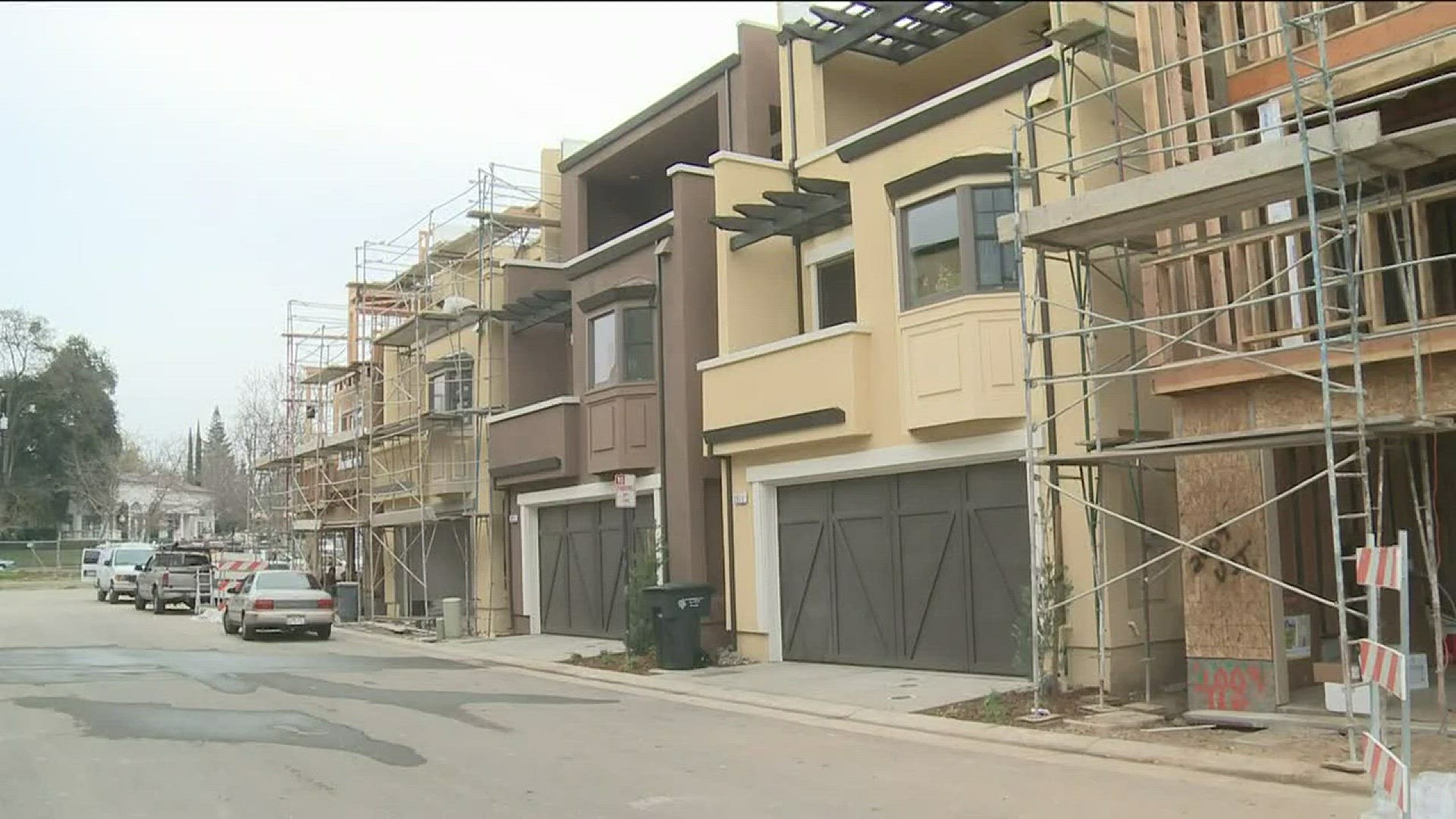Sacramento leads the country in annual rent growth, a function of our rapid population growth, as the fastest growing city in California. Most of them, according to a recent Redfin report, displaced from the Bay Area due to the high cost of living.
SB 35, which would streamline construction of housing projects that meet local zoning in areas that have not met their Regional Housing Needs Assessment goals, would remove a layer of resistance that some housing advocates say is what keeps housing supply low and rents rising.
“SB 35 will make sure that we don’t have projects that get stuck in an unbelievably long and expensive approval processes when they’re just approving a project that’s within zoning," said Senator Scott Wiener.
Sacramento YIMBY (Yes In My Back Yard) housing activist and Co-Chair of House Sacramento, Louis Mirante said low-income communities across California are bearing the brunt of construction that wealthier communities don’t.
“The wealthiest places are the most effective at excluding new housing," he said. "The neighborhoods of East Sacramento and Land Park are abhorrently low zoned areas. It’s functionally illegal to build apartment buildings in those areas, meaning that you’ve already excluded anyone without the amount of money required to purchase one of those mansions.”
Fernando Martin, co-director of the San Francisco Council of Community Housing Organizations said the bill is not enough to save low-income residents from displacement.
“What the bill would do is basically silence communities that are trying to shape development in their own communities," Martin said.
He added many are communities “that have faced historic disenfranchisement, that have faced red-lining and urban renewal, and we don’t want see those communities silenced.”
Laura Clark, Executive Director of YIMBY Action says communities are not losing control over what gets built, so long as they are building enough.
“It’s going to have to be if you follow the rules, you get your permit,” she said.
Even then, power remains in the hand of the community through zoning, said Clark.
“The community makes the decision when they decide what is allowable under their zoning,” she said.
The bill would remove that second layer of resistance that comes from local residents objecting to development that abides by zoning.
“In many communities, when someone actually says, I want to build something this high and these many units, the community says, now let’s keep talking about, let’s scale it back and then negotiate and negotiate and negotiate, and people think of that as local control, but that’s actually a very undemocratic process. It’s only the people who can show up at 3 p.m. on a Thursday and rant at their council member," Clark said.
In Sacramento, Mirante acknowledges that communities like East Sacramento and Land Park are zoned for low-density single-family homes, not for buildings and that the law would not change that. But he hopes it will add some teeth.
“It requires the city of Sacramento to permit those buildings in a more expeditious timeline and it removes a lot of the ability of people in East Sacramento to object over pretty aesthetic things, things like how the building actually looks, things that frankly are not nearly as important as giving a house to somebody who’s on the edge of houselessness," Mirante said.
I caught up with Louis at YIMBYTown, an annual three-day event where housing wonks from the Bay Area to LA to Massachusetts, and even London come together to talk housing. Among many specific housing-related wonkery, they discussed politics priorities and branding.
After passing the Senate, SB 35 is pending Assembly approval when voting reconvenes in late August. If it passes, the governor is expected to sign it, and that would be one of the first huge victories of the California YIMBY movement.

